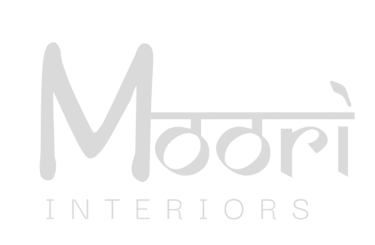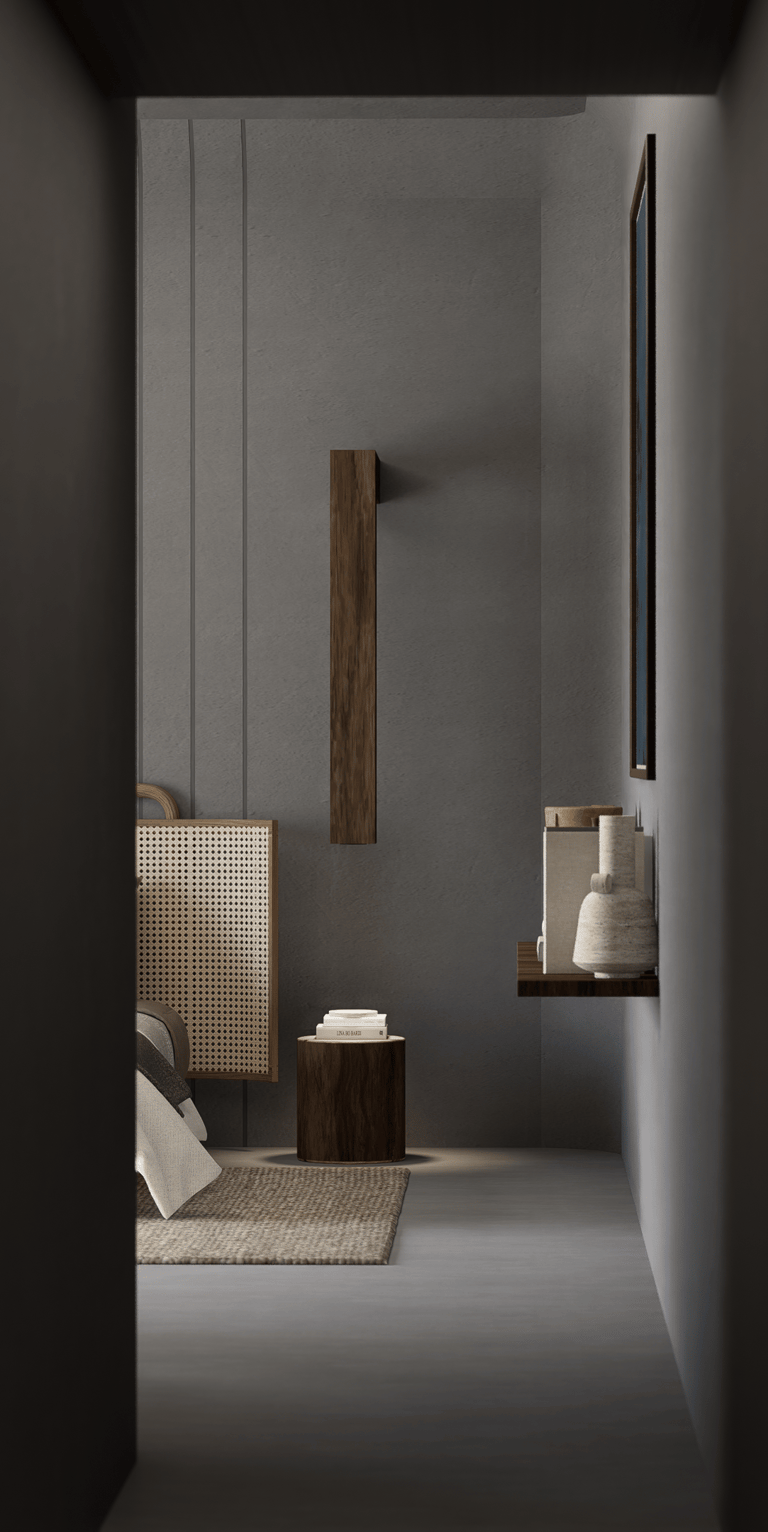Design Guide: Engineering Daily Wellbeing into Luxury Living
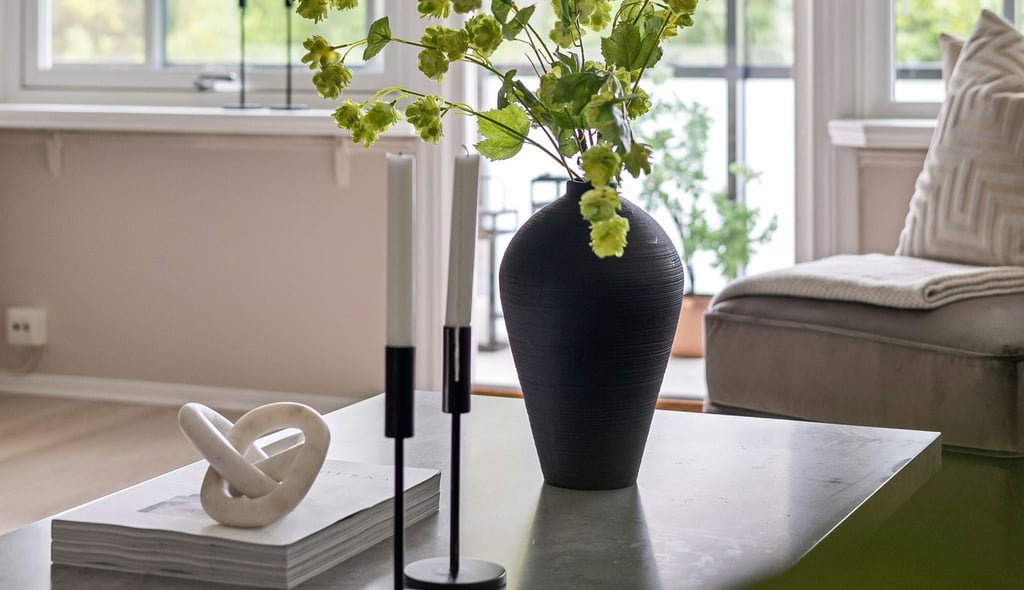

Introduction
Imagine a home where your every need is anticipated. A sunlit reading nook that welcomes your morning meditation. A sound-proof cinema lounge that turns a family movie night into a private event. A dining suite that effortlessly shifts from an intimate dinner setting to a grand majlis for guests. Here, luxury isn't just a look; it's the seamless alignment of design with a life of purpose and peace.
True luxury design doesn’t begin with aesthetics. It begins with how space makes you feel, and how seamlessly it supports your rhythms of rest, work, and connection.
This guide explores four interconnected layers of wellbeing design that together define modern luxury living:
The Sensory Layer - design for the body and mind, through air, light, sound, flow, and materiality.
The Reflective Layer - spaces that nurture identity, ritual, and inner calm.
The Intelligent Layer - discreet systems that sustain health, comfort, and environmental balance.
The Living Layer - the daily practices that translate design intent into lasting wellbeing.
Each layer builds upon the other, shaping homes that are not only beautiful, but deeply restorative, crafted for a life that feels as good as it looks.
Dimensions of Wellbeing Design
In psychology, Subjective Well-Being (SWB) refers to the enduring sense of happiness and life satisfaction shaped by one’s environment, emotions, and experiences. When applied to interiors, it becomes a measure of how space contributes to daily contentment and inner balance.
Unlike conventional design, which often celebrates beauty or function in isolation, wellbeing-driven interiors look deeper—at how architecture, light, materiality, and flow nurture calm, focus, and meaningful living. In a luxury residence, this philosophy informs every sensory and spatial choice, turning the home into a sanctuary for both body and mind.
Contemporary wellbeing research identifies four pillars of wellbeing-driven interiors. For a luxury residence, these guide every decision:
Pleasure: The sensory comfort of stone underfoot, tactile fabrics that invite touch, air that feels filtered and balanced, and lighting that adapts to rhythm and mood. Integrated sound systems enrich this sensory harmony—whether it’s a soft acoustic backdrop in the living area or immersive audio in a private lounge, sound becomes another layer of comfort, shaping atmosphere and emotion with precision.
Safety: A true sense of wellbeing begins with feeling secure. Environmental psychology confirms that perceived safety—freedom from intrusion, noise, or unpredictability—directly influences relaxation, focus, and emotional stability. In a luxury home, safety extends beyond physical protection to psychological assurance: spaces that flow intuitively, lighting that eliminates harsh contrasts, acoustics that preserve peace, and technology that safeguards discreetly. When a home feels inherently safe, it allows its inhabitants to fully experience pleasure, meaning, and purpose without interruption.
Personal Significance: Spaces that reflect identity—bespoke libraries, art walls, ateliers, or curated memory corners. Beyond aesthetics, interiors can tell your story. Family heirlooms, curated artwork, or spaces tailored for rituals ensure each room resonates with identity and memory.
Higher Purpose: Sustainability and legacy integrated seamlessly—energy efficiency, water recycling, biophilic connections, and materials that age gracefully. Purposeful design ensures the home not only nurtures its inhabitants but also contributes positively to the world it inhabits, becoming a testament to thoughtful living and enduring value.
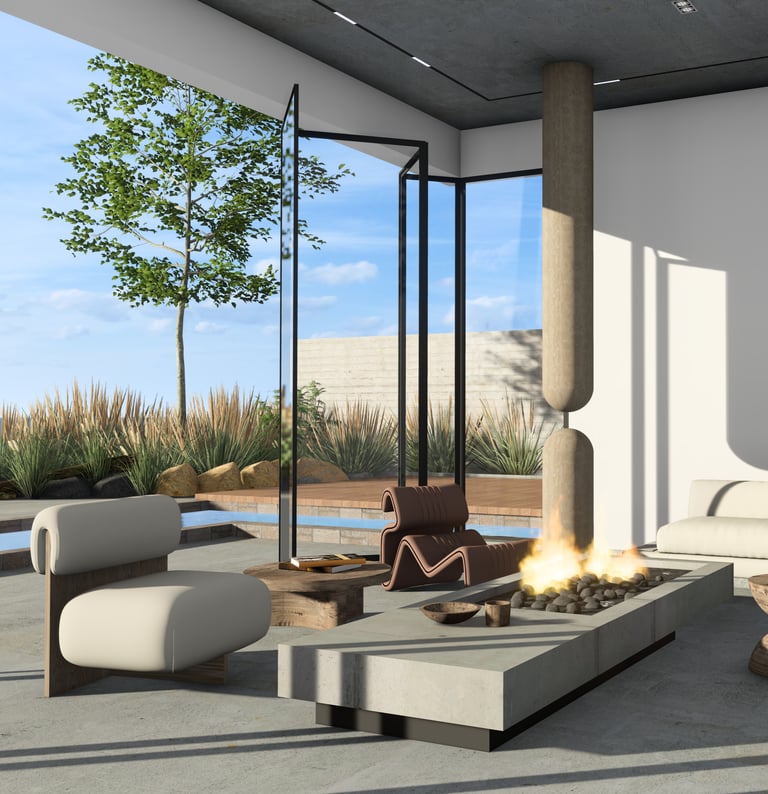

The Sensory Layer: Designing for the Body and Mind
Human wellbeing responds to sensory inputs — light, air, sound, texture, and scent. Environments that balance stimulation with calm enhance daily satisfaction. This section reframes all foundational design elements under the lens of sensory engagement.
Observe Your Environment
Look around your home and notice how air, light, sound, flow, and materials currently support—or fail to support—comfort, focus, and emotional balance. The following principles offer practical ways to elevate each element and enhance daily wellbeing.
1. Air — Living Ventilation by Zone
Fresh air is the foundation of health—and clarity.
Cognitive Boost: Pair airflow with subtle scents to activate focus and alertness (“fuel for the mind”).
Minimum Specification: Maintain ≥ 0.4 Air Changes per Hour (ACH) in sleeping & wellness zones via dedicated Energy Recovery Ventilator (ERV) diffusers.
Zoning Detail: Private suites, social areas, and service zones should breathe differently-automated ERV diffusers and CO₂ sensors adjust flow based on occupancy.
Temperature Ranges: Bedrooms 18-22 °C; kitchens/master suites 20–24 °C. Each space should have independent control.
Humidity as Emotional Modulator: Maintain 40–60 % Relative Humidity (RH) in libraries, study nooks, and wellness zones to enhance comfort, cognition, and tactile sensation.
2. Light — Living in Rhythm
Light is not just illumination. It is biological, emotional, and cognitive.
Luxury Application:
Circadian Alignment: Automated light scripts follow your daily rhythm:
Morning (6–9 AM): 5000 K, 300–500 lux ambient; 500 lux task light for kitchens/vanities.
Day (9 AM–5 PM): 4000 K; overhead diffused daylight panels above work zones.
Evening (6–9 PM): 2700 K; task lighting max 200 lux; ambient 50 lux.
Pre-Sleep (9 PM onward): 1800 K; <30 lux ambient; avoid overhead fixtures ; rely on floor/table lamps.
Non-Visual Impacts: Light affects alertness, mood, and physiological signaling. Tunable LEDs and daylight integration enhance both productivity and relaxation.
Emotional Meaning: Highlight art, heirlooms, or memory objects with focused light that tells a story, evokes emotion, and creates personal resonance.
Material Interplay: Pair textures and finishes with light to enhance emotional response: brass warms under evening light, veined marble shifts dynamically with daylight.
Sound — The Architecture of Silence
Silence is a luxury, but sound can nourish the mind.
Sonic Zoning: Ensure bedrooms have a Sound Transmission Class (STC) rating of 45 or higher so they remain peaceful and private. Family or social zones should aim for STC 35 or higher, allowing conversation and activity without disturbing quiet areas. Use storage, circulation zones, and acoustic treatments to buffer lively spaces from restful ones, maintaining calm throughout the home.
Mood Sculpting: Use rugs, fabric wall panels, ceiling clouds, and ambient audio to create immersive acoustic experiences—quiet for focus, gentle resonance for relaxation.
Invisible Engineering: Heavy doors, quiet HVAC systems, and strategically placed “quiet threshold zones” maintain calm without sacrificing design integrity.
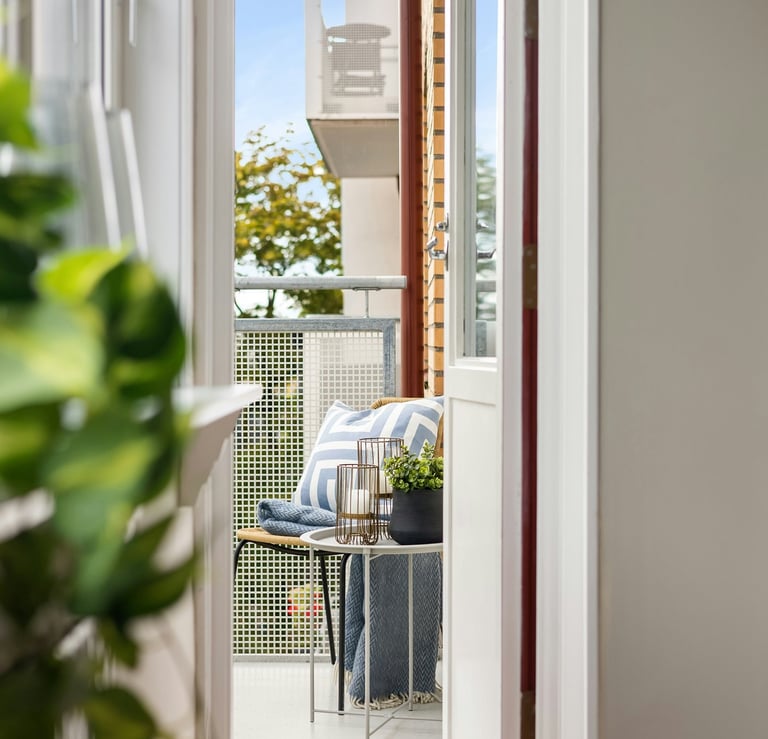

Flow — Movement Designed In
A home should keep the body alive and the mind engaged.
Intentional Circulation: Corridors should ideally be 1.2–1.5 meters wide—wide enough to feel open and comfortable, but still guide movement naturally. Placing visual anchors, like a sculpture, artwork, or a plant, every 5-8 meters helps orient the eye and reduces subtle navigational stress, making movement through the home feel effortless and graceful.
Sculptural Stairs: Stairs can double as a centerpiece. Position them centrally and illuminate with around 300 lux (a measure of light intensity) enough to clearly see steps without harsh glare. This encourages daily use for health and movement, while making the staircase a living work of art that integrates function and aesthetic drama.
Seamless Transitions: Connect private, social, and service spaces fluidly so movement feels natural, graceful, and restorative.
Subtle Guidance: Floor-level LED strips at night guide movement unconsciously, reducing stress and improving safety.
Accessibility & Safety: Ensure all circulation paths, stairs, and transition zones accommodate occupants of varying mobility. Non-slip flooring, wider doorways, and clear visual cues support safe, effortless movement while preserving aesthetic harmony.
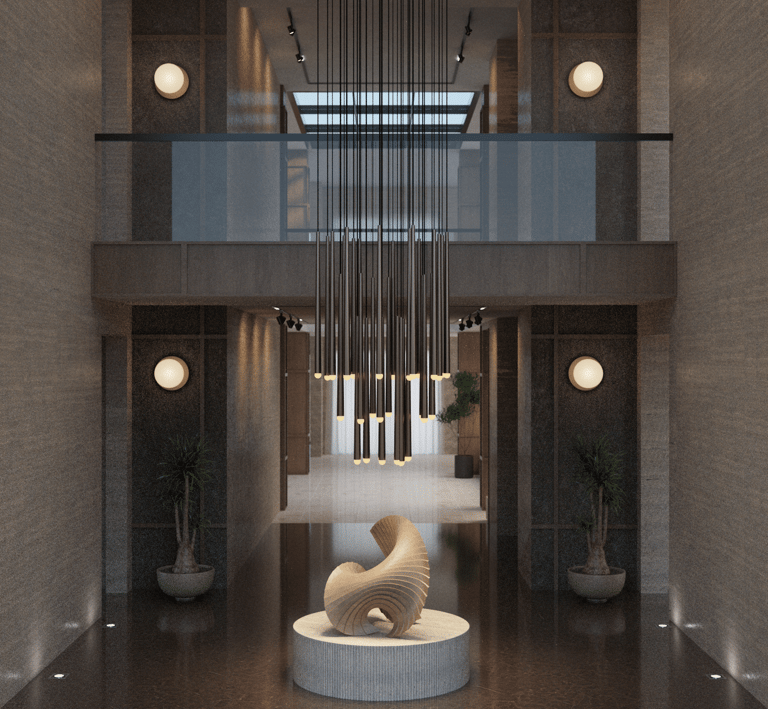

Materials : Touch as Therapy
Tactile experience and material longevity are central to wellbeing.
Purity: Low-VOC paints (<50 g/L), adhesives (<5 % solvent) safeguard air quality.
Patina and Aging: Timber, stone, and metals should age beautifully, gaining character over time.
Material-Light Harmony: Choose finishes that interact with light and shadow to amplify warmth, texture, and emotional resonance.
Testing Zones: Use sample zones to demonstrate how materials will evolve, instilling confidence in clients and reinforcing the home as a living system.
Designing for subjective wellbeing (SWB) extends to spaces that support ritual, reflection, and inner calm. Research in environmental psychology shows that areas dedicated to mindfulness, meditation, or personal ritual can significantly reduce stress, enhance emotional regulation, and foster a sense of meaning making them indispensable in luxury residences.
Principles for SWB-Driven Interiors:
Pleasure through mindful sensory engagement: Curated light, textures, and sound that support reflection.
Personal significance: Bespoke elements reflecting identity, passions, and memory.
Meaningful experiences: Spaces explicitly designed for rituals, meditation, or contemplation.
Active engagement: Systems that allow tuning of light, sound, and scent to suit personal routines or moods.
Connection to nature and legacy: Biophilic features, sustainable materials, and framed outdoor views.
Luxury Applications:
Meditation alcoves or prayer rooms with adjustable lighting, sound, and scent to support daily rituals.
Garden terraces designed for reflection and quietude, integrating natural light, greenery, and seating for mindfulness.
Transition spaces that signal a shift from public life to private sanctuary through lighting, materials, and acoustics.
The Reflective Layer: Spaces for Ritual and Inner Calm
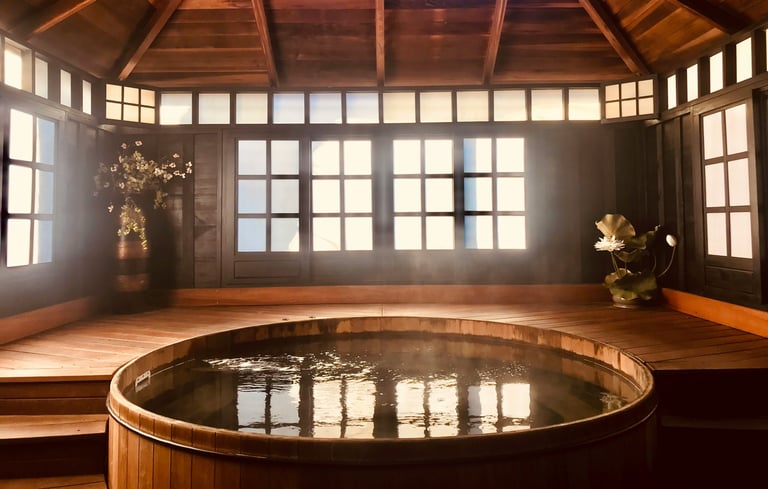

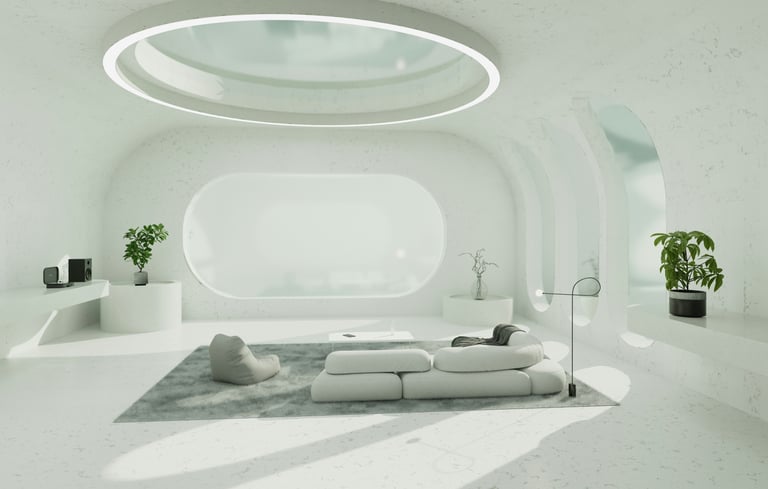

The Intelligent Layer: Technology for Health and Harmony
Modern luxury is defined by quiet intelligence—homes that think, adapt, and protect without disrupting the visual or emotional calm of their inhabitants. This layer integrates discreet systems that sustain health, comfort, and environmental balance with seamless precision.
Smart Health Monitoring Systems
Sensors: Continuously monitor VOCs, particulate matter, CO₂, and humidity.
Automated Response: Ventilation, humidification, and filtration adjust automatically to maintain optimal indoor conditions.
Dashboard Control: Occupants can view and fine-tune their environment, ensuring the home consistently nurtures both body and mind.
Integrated Comfort Systems
Lighting, temperature, and air quality operate in harmony through intelligent automation, while acoustic and security systems remain unobtrusive yet reassuring. The result is a home that is a living system tuned to human wellbeing.
The Living Layer: Design as a Daily Practice
A home’s true success is measured not by its finishes, but by how effortlessly it supports a balanced, restorative life.
This layer translates design intent into daily wellbeing through movement, rhythm, and ritual.
Design for Movement: Layouts that encourage natural circulation and stairs that invite use.
Support Circadian Rhythm: Protect sleep in bedrooms, energize mornings in wellness zones, and relax evenings in dining and lounge areas.
Engineer Resilience: Redundant systems for power, internet, and environmental control.
Simplify Care: Discreet service access preserves uninterrupted routines.
Bring Nature In: Living greenery, water features, and framed vistas reconnect occupants to calm.
Dedicate Wellness Zones: Spa rooms, meditation nooks, and thermal comfort features elevate recovery into ritual.
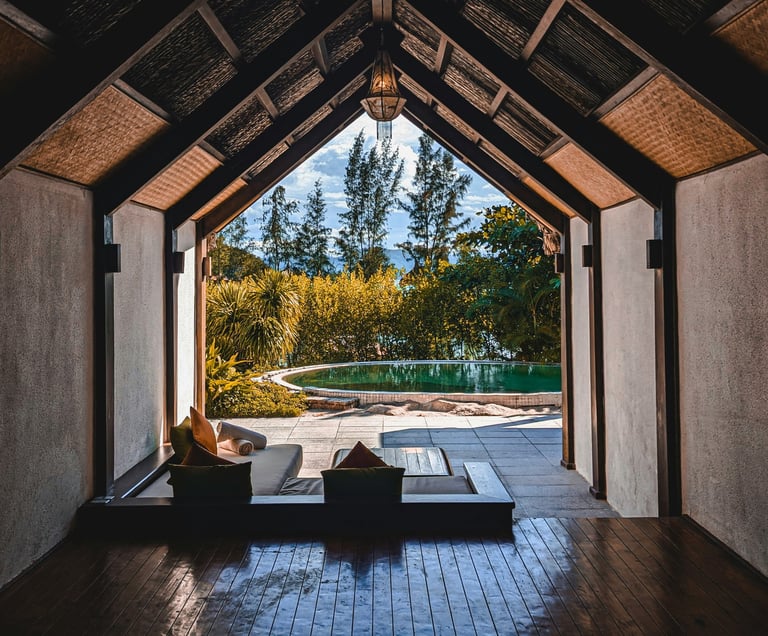

Closing Thought
Luxury is no longer measured in objects but in outcomes. The greatest wealth is a home that returns energy, focus, and calm every day. By orchestrating air, light, sound, flow, and materiality with research-driven precision, your residence becomes more than a dwelling. It becomes a sanctuary designed for a life fully lived—balanced, beautiful, and deeply restorative.
